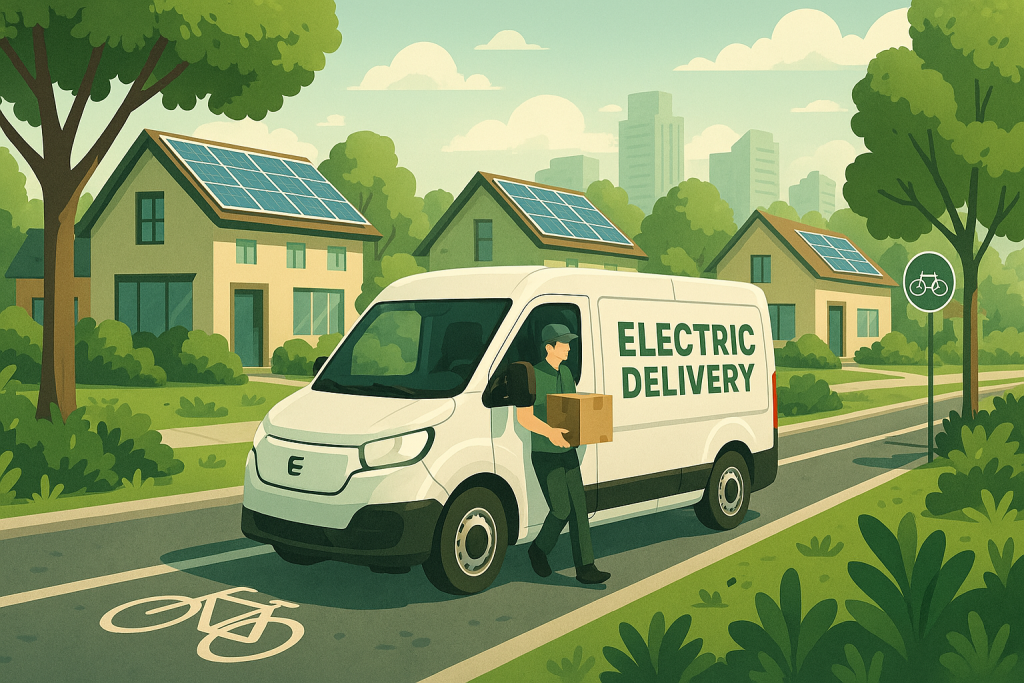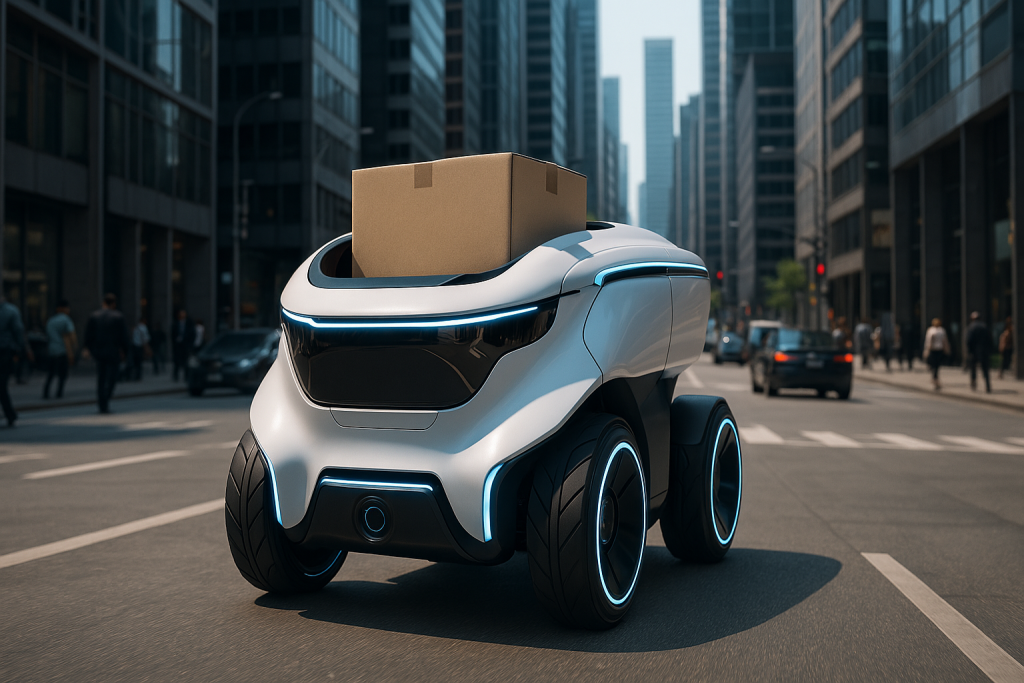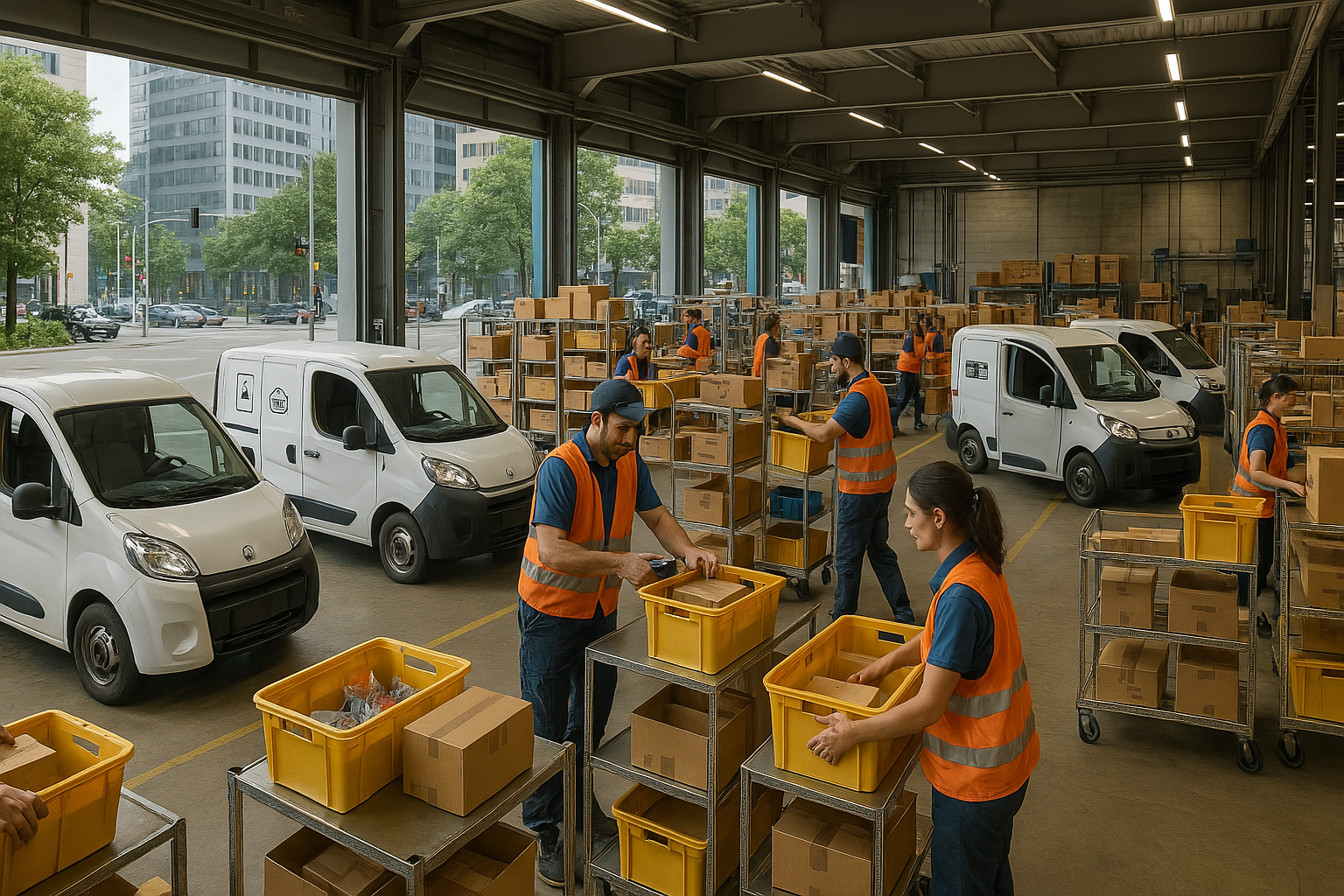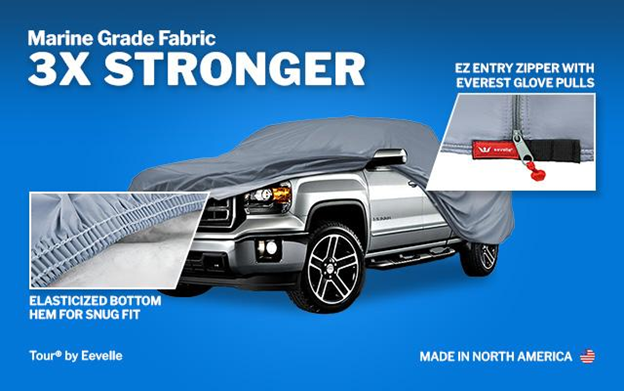In today’s fast-paced e-commerce world, businesses are under increasing pressure to meet the growing expectations of consumers, especially when it comes to delivery. With the rise of online shopping, speed and convenience have become key factors in driving customer satisfaction. But how can businesses keep up with this demand for faster, more reliable deliveries?
The answer lies in last mile delivery solutions. As the final leg of the delivery journey, last mile delivery plays a crucial role in ensuring products reach consumers in a timely and efficient manner. This blog will explore how businesses are leveraging innovative last mile solutions to meet customer expectations and stay ahead of the competition.
Table of contents
- 1. What is Last Mile Delivery?
- 2. The Growing Consumer Demand for Speed and Convenience
- 3. Challenges Faced by Businesses in Last Mile Delivery
- 4. How Last Mile Delivery Solutions Are Addressing These Challenges
- 5. Benefits of Efficient Last Mile Delivery for Businesses
- 6. Case Studies: Businesses Thriving with Last Mile Delivery Solutions
- 7. The Future of Last Mile Delivery
- Conclusion:
- Frequently Asked Questions (FAQs) About Last Mile Delivery Solutions
- What is last mile delivery?
- Why is last mile delivery important?
- What are the main challenges of last mile delivery?
- How can businesses improve last mile delivery efficiency?
- What role does technology play in last mile delivery?
- What is a micro-fulfillment center?
- Can last mile delivery be sustainable?
- What is crowdsourced delivery?
- How can businesses reduce last mile delivery costs?
- What are the benefits of fast last mile delivery for businesses?
1. What is Last Mile Delivery?
Last mile delivery refers to the final segment of the supply chain, where goods are transported from a local distribution center to the customer’s doorstep. Despite being the shortest leg of the journey, it is often considered the most complex and expensive.
Last mile delivery is vital because it is the point where the customer interacts directly with the business, and it has the potential to make or break the customer’s overall experience. A delay, incorrect delivery, or failure to meet expectations can lead to dissatisfaction, negative reviews, and lost business.

2. The Growing Consumer Demand for Speed and Convenience
The rise of e-commerce giants like Amazon has set high standards for delivery speed and convenience. Consumers now expect faster deliveries, often demanding same-day or next-day shipping. According to a 2024 report, 78% of consumers say fast delivery influences their decision to purchase from a particular retailer.
Beyond speed, customers want more flexibility and control over their deliveries. They expect the ability to track their orders in real time and select preferred delivery times or locations. This shift in consumer behavior has pushed businesses to find efficient solutions to meet these heightened demands.
3. Challenges Faced by Businesses in Last Mile Delivery
While the demand for faster deliveries grows, businesses face several challenges in the last mile delivery process:
- High Costs: Last mile delivery is often the most expensive part of the logistics chain due to factors like fuel, labor, and operational overhead.
- Traffic and Geographic Barriers: Urban congestion and remote locations can complicate delivery schedules and increase costs.
- Sustainability Concerns: Consumers are increasingly conscious of the environmental impact of delivery services, pushing businesses to adopt more sustainable delivery methods.
- Delivery Complexity: As customer expectations evolve, businesses must manage a range of delivery options, including same-day, next-day, and time-specific deliveries, further complicating operations.
Despite these challenges, last mile delivery solutions are continuously evolving to help businesses overcome these obstacles and improve service quality.
4. How Last Mile Delivery Solutions Are Addressing These Challenges
To meet consumer demands while minimizing costs and improving efficiency, businesses are adopting innovative last mile delivery solutions:
Technology Integration
One of the primary ways businesses are improving their last mile delivery processes is by integrating advanced technologies. GPS tracking and route optimization software help delivery companies reduce travel time, improve efficiency, and minimize fuel costs. Real-time tracking systems also keep customers informed, increasing transparency and satisfaction.
Delivery Automation
Automation is reshaping the logistics industry. Companies are increasingly experimenting with autonomous vehicles, drones, and robots for last mile delivery. These technologies have the potential to significantly reduce delivery times and costs while overcoming the challenges posed by traffic and human labor shortages.
Crowdsourced Deliveries
Businesses are also leveraging the gig economy to streamline their last mile deliveries. Crowdsourced delivery models, where independent contractors deliver packages using their own vehicles, have gained traction. This approach allows companies to scale their operations without the heavy upfront costs associated with traditional delivery fleets.
Micro Fulfillment Centers
The rise of micro-fulfillment centers, small, localized warehouses situated closer to customers, is helping reduce delivery times. These facilities are strategically placed in urban areas, allowing businesses to store inventory closer to their customer base and expedite deliveries, especially for same-day or next-day shipping.
5. Benefits of Efficient Last Mile Delivery for Businesses
Efficient last mile delivery brings significant advantages to businesses, including:
Increased Customer Satisfaction
Delivering products quickly and reliably directly influences customer loyalty. Companies that provide fast, transparent, and convenient delivery options can foster a positive customer experience, resulting in repeat business and increased brand loyalty.
Cost Reduction
By optimizing delivery routes, using automation, or adopting crowdsourced solutions, businesses can lower the cost of last mile delivery. In the long run, streamlining this part of the logistics process can lead to substantial savings.
Competitive Advantage
As customer expectations around delivery continue to rise, businesses that offer faster and more efficient last mile delivery will stand out from their competitors. In a crowded marketplace, providing a seamless delivery experience can be a key differentiator.

6. Case Studies: Businesses Thriving with Last Mile Delivery Solutions
Several businesses have successfully implemented last mile delivery solutions to meet customer expectations:
- Amazon: With its vast network of fulfillment centers, Amazon has set the gold standard for fast and reliable deliveries. The company’s investment in last mile technologies such as drones and Prime Now for same-day delivery has given it a competitive edge.
- Walmart: Walmart has been experimenting with autonomous delivery vehicles to reduce last mile delivery costs. Additionally, the retailer’s partnership with third-party delivery services like Postmates has helped enhance delivery speed and efficiency.
- Local Retailers: Smaller retailers are also adopting last mile solutions. For example, many have partnered with gig economy platforms like Uber Eats for fast local deliveries, ensuring they can compete with larger players in terms of delivery speed.
7. The Future of Last Mile Delivery
As consumer demands for faster, more efficient, and environmentally-friendly deliveries continue to rise, the future of last mile delivery is poised for rapid transformation. Several key trends and advancements are expected to shape the next generation of delivery solutions. Here’s a deeper dive into what the future of last mile delivery might look like:
Sustainability
Sustainability is becoming a key focus for both businesses and consumers, driven by growing concerns over climate change and environmental impacts. As consumer awareness of environmental issues increases, businesses are expected to adopt more eco-friendly delivery practices.
- Electric Vehicles (EVs): In response to the growing demand for greener options, many companies are making the switch to electric delivery vehicles. EVs not only reduce carbon emissions but also lower operating costs, especially as the cost of electric vehicles continues to decline and charging infrastructure improves. Companies like UPS and FedEx are already investing heavily in EV fleets to minimize their environmental footprint.
- Carbon-Neutral Deliveries: Alongside EV adoption, businesses are exploring carbon-neutral delivery methods. Some companies are committing to offsetting their emissions through investments in renewable energy or carbon offset programs, ensuring that the environmental impact of their deliveries is minimized. This move aligns with consumer preferences for brands that prioritize sustainability.
- Sustainable Packaging: Along with greener delivery methods, sustainability in packaging will also be a focus. Expect more companies to shift towards using recyclable, biodegradable, or reusable packaging to further reduce their carbon footprint.
AI and Machine Learning
Artificial Intelligence (AI) and Machine Learning (ML) are set to play a transformative role in optimizing last mile delivery operations. These technologies will revolutionize how deliveries are managed, making them faster, more efficient, and personalized.
- Route Optimization: AI-powered systems are already being used to optimize delivery routes, taking into account real-time factors such as traffic, weather, and road conditions. By predicting the most efficient routes, AI can help reduce fuel consumption, minimize delivery delays, and lower operational costs.
- Predictive Analytics: Machine learning algorithms will allow businesses to anticipate demand and optimize inventory distribution across various locations. This means companies can proactively plan their delivery schedules based on historical data, real-time consumer behavior, and seasonal trends, ultimately improving delivery speed and reducing stockouts.
- Personalized Delivery Experiences: AI can be used to offer highly personalized delivery options for consumers. Through data analysis, businesses can offer customers delivery preferences, such as preferred times, locations, and even package drop-off methods (e.g., lockers, designated safe spots). This leads to improved customer satisfaction and loyalty as consumers enjoy a tailored delivery experience.
- Robotic Process Automation (RPA): AI can also automate various administrative tasks in last mile delivery, such as scheduling, customer communication, and order processing. By minimizing manual intervention, businesses can reduce human errors and focus on scaling operations efficiently.
Hyperlocal Delivery
The demand for hyperlocal, on-demand deliveries is expected to surge, particularly in urban areas where convenience is paramount. Hyperlocal delivery models are designed to get products to consumers within hours or even minutes of an order being placed. This level of immediacy requires businesses to create ultra-efficient delivery networks capable of handling smaller, more frequent deliveries.
- Micro-Fulfillment Centers: To meet the growing demand for rapid deliveries, businesses are setting up micro-fulfillment centers (MFCs) in local areas closer to consumers. These small, agile warehouses allow businesses to stock inventory near urban hubs, enabling them to fulfill orders quickly and with minimal delivery time. The closer the fulfillment center is to the customer, the faster the delivery.
- Drones and Robotics: Technology like drones and autonomous delivery robots are expected to play a central role in hyperlocal delivery models. Drones can deliver smaller packages in dense urban areas, avoiding traffic and delivering items in record time. Similarly, autonomous robots can navigate sidewalks and deliver goods to doorsteps, further reducing human labor and increasing delivery efficiency. Companies like Amazon and Google are already testing drone delivery systems to make this a reality.
- Gig Economy and Crowdsourcing: Hyperlocal delivery often relies on the gig economy, where independent contractors handle deliveries on demand. Apps like Uber, Postmates, and DoorDash have popularized crowdsourced delivery models, where businesses tap into a pool of freelance drivers to fulfill last mile deliveries quickly. This model allows companies to scale operations without maintaining their own fleet of delivery vehicles.
- Urban Logistics Networks: As the demand for hyperlocal deliveries grows, companies will likely invest in creating highly specialized urban logistics networks. These networks will consist of delivery hubs, fleet management systems, and communication technologies designed to facilitate the rapid movement of goods through urban areas.
Conclusion:
As consumer expectations for delivery speed and convenience continue to rise, businesses must adapt and invest in innovative last mile delivery solutions. Whether through automation, crowdsourcing, or advanced technologies, businesses that can optimize their last mile operations will not only meet but exceed customer expectations. By doing so, they can build stronger customer loyalty, gain a competitive edge, and set themselves up for long-term success in the ever-evolving e-commerce landscape.
Are you ready to explore how last mile delivery solutions can help your business stay ahead of the curve? Start by researching the latest delivery technologies and implementing solutions that align with your customer needs and business goals.
Frequently Asked Questions (FAQs) About Last Mile Delivery Solutions
What is last mile delivery?
Last mile delivery refers to the final step in the delivery process, where goods are transported from a distribution center or local hub to the customer’s doorstep. It is the most crucial and often the most challenging part of the logistics chain.
Why is last mile delivery important?
Last mile delivery is important because it directly impacts customer satisfaction. It’s the point where businesses interact with consumers, making it a crucial aspect of the customer experience. Efficient last mile delivery ensures fast, reliable service, which enhances customer loyalty and retention.
What are the main challenges of last mile delivery?
The main challenges of last mile delivery include high costs, traffic congestion, geographical barriers, the need for real-time tracking, environmental concerns, and the complexity of offering multiple delivery options (same-day, next-day, time-window deliveries).
How can businesses improve last mile delivery efficiency?
Businesses can improve efficiency through technologies like GPS tracking, route optimization software, autonomous vehicles, drones, and micro-fulfillment centers. They can also explore crowdsourced deliveries and partner with third-party providers to streamline operations.
What role does technology play in last mile delivery?
Technology plays a key role by enabling businesses to optimize delivery routes, provide real-time tracking, and manage deliveries efficiently. GPS, AI-powered tools, and machine learning algorithms help reduce costs, improve speed, and enhance the customer experience.
What is a micro-fulfillment center?
A micro-fulfillment center is a small, decentralized warehouse located closer to urban areas or customer bases. These centers help businesses reduce delivery times and improve operational efficiency by enabling faster, local fulfillment of orders, particularly for same-day or next-day delivery.
Can last mile delivery be sustainable?
Yes, businesses can adopt sustainable last mile delivery practices by using electric vehicles, optimizing delivery routes to reduce fuel consumption, and partnering with eco-friendly delivery services. Additionally, some businesses are using carbon-neutral shipping options to meet consumer demand for greener delivery solutions.
What is crowdsourced delivery?
Crowdsourced delivery involves using independent contractors or gig workers to deliver packages using their own vehicles. This flexible model allows businesses to scale their operations quickly and affordably while meeting customer demands for faster deliveries.
How can businesses reduce last mile delivery costs?
Businesses can reduce last mile delivery costs by optimizing delivery routes, using automation technologies like drones and robots, adopting crowdsourced delivery models, and leveraging micro-fulfillment centers. Additionally, using data analytics to predict demand and streamline operations can help cut costs.
What are the benefits of fast last mile delivery for businesses?
Fast last mile delivery can enhance customer satisfaction, foster brand loyalty, and provide a competitive edge. It helps businesses meet the growing consumer demand for speed, improves customer retention, and can lead to cost savings through optimized operations.




2 thoughts on “How Last Mile Delivery Solutions Are Helping Businesses Meet Consumer Expectations”
kc37qy
046ryx